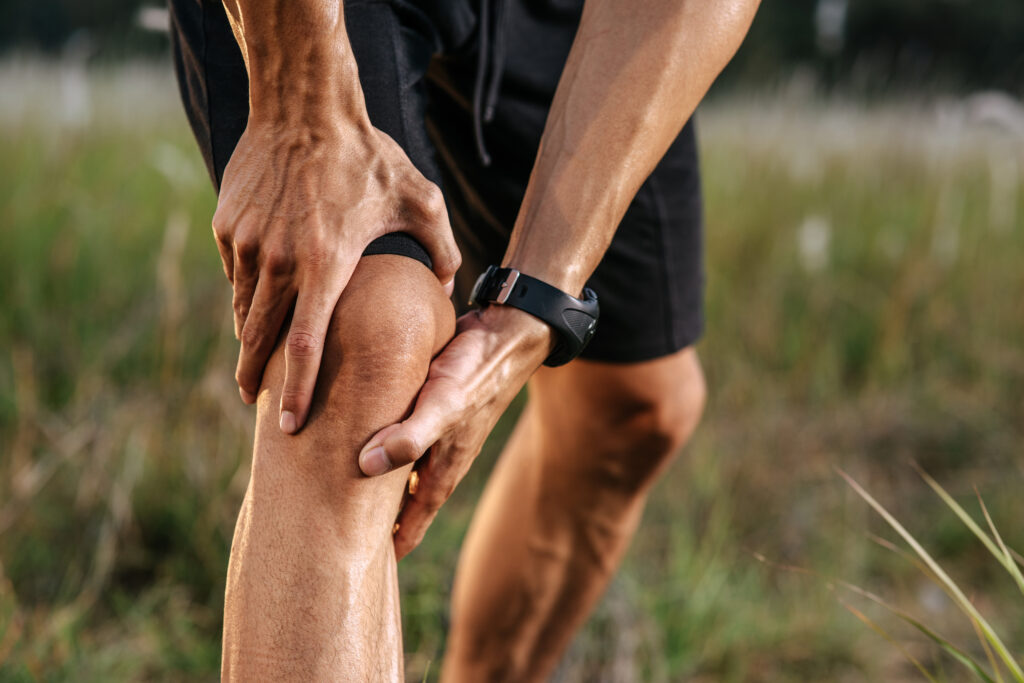You might not realize how small adjustments can greatly elevate your athletic performance. Whether it's modifying your training routine or refining your techniques, each change can lead to noticeable improvements. Optimizing your nutrition and recovery practices plays an essential role, too. Additionally, enhancing your mental resilience can give you an edge during competition. But what about flexibility and mobility? These often-overlooked factors could be the key to releasing your true potential. Let's explore these adjustments further and see how they can transform your approach to athletics.
Training Routine Modifications
When it comes to boosting your athletic performance, shaking up your training routine can make a world of difference. If you've been following the same regimen for a while, you might notice diminishing returns. Your body adapts to the same exercises, causing plateaus in strength and endurance. To combat this, consider incorporating variety into your workouts.
Start by changing the intensity and duration of your sessions. If you usually run for 30 minutes at a steady pace, try interval training instead. Alternate between bursts of high-intensity sprints and lower-intensity recovery periods. This not only improves your cardiovascular fitness but also keeps your workouts engaging.
Another effective modification is to switch up your exercise selection. If you typically focus on squats and bench presses, add in exercises like lunges, kettlebell swings, or push-ups. This variation targets different muscle groups and helps prevent overuse injuries.
You can also experiment with training frequency. If you're training five days a week, consider reducing it to four but increasing the intensity on those days. Quality over quantity can lead to better results.
Finally, don't forget about cross-training. Engaging in different sports or activities—like swimming, cycling, or yoga—can enhance your overall athleticism. It challenges your body in new ways and can even improve your main sport performance.
Technique Refinements
When you refine your technique, you release the potential for improved movement mechanics and enhanced range of motion.
These adjustments can lead to more efficient performance and reduced risk of injury.
Improved Movement Mechanics
Refining your movement mechanics can greatly enhance your athletic performance by promoting efficiency and reducing the risk of injury. When you focus on the way you move, you'll notice improvements in speed, agility, and overall coordination. Small adjustments in your technique can lead to significant gains in how you perform.
Start by analyzing your current movements. Are you using your body's natural alignment? Proper posture and body positioning can drastically improve your mechanics. For instance, while running, make sure your arms are moving in sync with your legs to maintain balance and momentum.
Next, work on your foot placement. Whether you're sprinting, jumping, or changing direction, the way your feet strike the ground can either propel you forward or hold you back.
Incorporate drills that emphasize these mechanics into your training routine. Focus on controlled movements that reinforce proper technique, and consider seeking feedback from a coach or trainer. They can provide valuable insights and help you identify areas for improvement.
Enhanced Range of Motion
Improved movement mechanics naturally pave the way for enhancing your range of motion, which is essential for maximizing athletic performance. When your joints and muscles function at their best, you can move more freely and efficiently, allowing for better execution of skills.
With enhanced range of motion, you're less prone to injuries and can adapt to various athletic demands.
Incorporating adjustments into your training can greatly improve flexibility and mobility. Regular stretching and targeted exercises can help elongate muscle fibers and increase joint flexibility. This means you'll achieve deeper squats, more powerful throws, and quicker lateral movements.
Additionally, refining your technique guarantees that you're using your body's full potential. For example, proper alignment during a lift allows you to engage more muscle groups effectively, leading to increased strength and performance.
Don't overlook the importance of warm-ups, as they prepare your body for movement and boost your range of motion.
Nutritional Adjustments
Fueling your body with the right nutrients plays a pivotal role in enhancing athletic performance. When you make nutritional adjustments, you're not just eating differently; you're setting the stage for improved endurance, strength, and recovery.
Here are three key areas to focus on:
- Macronutrient Balance: Verify you're consuming the right balance of carbohydrates, proteins, and fats. Carbs provide the energy you need for intense workouts, proteins help repair and build muscle, and healthy fats support overall health.
- Hydration: Staying properly hydrated is essential. Even slight dehydration can hinder your performance. Make it a habit to drink water throughout the day, and consider electrolyte-rich drinks during long sessions.
- Timing Your Meals: Pay attention to when you eat. Consuming the right foods at the right times can greatly impact your performance. Aim for a mix of carbs and proteins before and after workouts to fuel and recover effectively.
Integrating these adjustments can lead to noticeable changes in your performance. Not only will you feel more energized during workouts, but your body will also recover faster, allowing you to train harder and more frequently.
Mental Resilience Strategies
When it comes to enhancing your athletic performance, mental resilience is key.
You can use visualization techniques, positive self-talk, and effective goal-setting strategies to strengthen your mindset.
These tools will help you stay focused and motivated, especially during tough moments in your training.
Visualization Techniques
How can visualization techniques sharpen your mental resilience? By harnessing the power of your imagination, you can prepare yourself for challenges both mentally and physically.
Here are three ways visualization can enhance your performance:
- Clarity of Goals: Visualizing your objectives helps you define what success looks like. When you see it, you're more likely to pursue it.
- Stress Reduction: Imagining yourself in high-pressure situations can help you manage anxiety. By mentally rehearsing, you condition your mind to stay calm and focused when it counts.
- Enhanced Focus: Visualization trains your brain to concentrate on specific tasks. When you picture yourself executing a skill perfectly, you increase your chances of doing it in real life.
Positive Self-Talk
Positive self-talk is a powerful tool that can considerably boost your mental resilience. By consciously choosing positive phrases and affirmations, you can reshape your mindset and enhance your performance. Instead of letting negative thoughts creep in during practice or competition, focus on what you can achieve. Remind yourself of your strengths and past successes.
When you engage in positive self-talk, you're not just boosting your confidence; you're also preparing your mind to tackle challenges head-on. Tell yourself, "I can do this" or "I'm prepared for this moment." This approach helps you stay calm under pressure and maintain a positive attitude, even when things don't go as planned.
Developing a habit of positive self-talk can take time, but it's worth the effort. Start by identifying negative thoughts that arise during training or competition. Once you recognize them, replace them with positive affirmations that resonate with you. Keep them short and simple, so they're easy to remember.
Incorporating positive self-talk into your routine can lead to improved focus, enhanced motivation, and greater resilience, ultimately elevating your athletic performance to new heights.
Goal Setting Strategies
Setting clear and achievable goals is essential for developing mental resilience in athletics. When you set focused goals, you create a roadmap that guides your training and competition.
Here are three strategies to enhance your goal-setting process:
- SMART Goals: Make your goals Specific, Measurable, Achievable, Relevant, and Time-bound. This framework helps you break down larger objectives into manageable steps.
- Short and Long-Term Goals: Balance immediate goals with long-term aspirations. Short-term goals keep you motivated, while long-term goals provide a vision of where you want to go.
- Regular Review: Frequently assess your progress. This not only helps you stay on track but also allows you to adjust your goals as needed, reinforcing your resilience and adaptability.
Recovery Optimization
Recovery optimization is fundamental for athletes looking to enhance their performance and longevity in their sport. After intense training or competition, your body needs time to repair and rejuvenate. By focusing on effective recovery strategies, you can guarantee that you're ready for the next challenge.
Start by prioritizing sleep. Quality rest is essential for muscle recovery, hormone regulation, and overall mental clarity. Aim for 7 to 9 hours of uninterrupted sleep each night. Consider creating a bedtime routine to enhance your sleep quality.
Next, incorporate active recovery days into your training schedule. Light exercises like walking, yoga, or swimming promote blood flow and help clear out lactic acid, reducing soreness. These days allow your muscles to recover while still keeping you engaged.
Nutrition plays a significant role in recovery as well. Fuel your body with a balanced diet rich in protein, healthy fats, and carbohydrates. Post-workout meals should focus on replenishing lost nutrients. Hydration is equally fundamental; make sure you're drinking enough water to support muscle function and recovery.
Don't overlook the benefits of stretching and foam rolling. These practices help alleviate tightness, improve flexibility, and prevent injuries. By making them part of your routine, you'll enhance your overall performance.
Lastly, consider incorporating recovery technologies like compression garments or cold therapy. These tools can help reduce inflammation and speed up the healing process.
Equipment Upgrades
Upgrading your equipment can dramatically enhance your athletic performance.
With advanced technology integration and personalized gear selection, you can tailor your tools to suit your unique needs.
Embracing these upgrades not only boosts your efficiency but also helps you stay ahead of the competition.
Advanced Technology Integration
Incorporating advanced technology into your training regimen can greatly enhance your athletic performance. By utilizing cutting-edge equipment, you can track your progress, improve your skills, and reduce the risk of injuries.
Here are three ways advanced technology can elevate your game:
- Wearable Devices: These gadgets, like heart rate monitors and GPS trackers, provide real-time data on your performance metrics. You'll gain insights into your heart rate, pace, and overall effort, helping you adjust your training accordingly.
- Smart Equipment: From smart basketballs that analyze your shooting technique to tennis rackets that measure your swing speed, these tools give you immediate feedback. You can pinpoint areas needing improvement, allowing for targeted training sessions.
- Virtual Reality Training: VR systems simulate real-game environments, enhancing your decision-making skills and reaction times. This immersive training helps you develop muscle memory in a safe setting, transferring those skills to actual competitions.
Personalized Gear Selection
Choosing the right equipment can make a significant difference in your athletic performance. Personalized gear selection isn't just about aesthetics; it's about finding the right tools that enhance your strengths and address your weaknesses.
Whether you're a runner, cyclist, or team player, the gear you choose should match your unique body type, skill level, and sport-specific demands.
Start by evaluating your needs. Consider factors like your body mechanics, fitness goals, and the conditions in which you'll be performing. For instance, proper footwear can reduce injury risk and improve your efficiency on the field or track.
Custom-fit helmets, pads, or racquets can enhance your comfort and performance, allowing you to focus purely on your game.
Investing in high-quality, personalized equipment can lead to noticeable gains. You'll experience improved stability, better grip, and enhanced agility.
Don't hesitate to consult professionals or specialized retailers who can guide you through the selection process. Remember, the right gear isn't just an accessory; it's an essential part of your performance toolkit.
Goal Setting Revisions
As you progress in your athletic journey, revising your goals can greatly enhance your performance. Setting and adjusting your goals not only keeps you motivated but also guarantees that you're on a path that aligns with your evolving abilities.
Here are three key reasons why revising your goals is essential:
- Reflect Your Current Skills: As you improve, your previous goals may no longer challenge you. Revising them helps you set new benchmarks that push your limits.
- Adapt to Changing Circumstances: Life can be unpredictable, and external factors might affect your training. Whether it's an injury or a change in your schedule, altering your goals allows you to stay flexible and focused on what's achievable.
- Maintain Motivation: Stale goals can lead to boredom and burnout. Regularly updating your objectives keeps your training fresh and exciting, reigniting your passion for the sport.
To effectively revise your goals, start by evaluating your current performance and identifying areas for improvement. Set SMART goals—Specific, Measurable, Achievable, Relevant, and Time-bound—so you have a clear roadmap to follow.
Additionally, be sure to celebrate small victories along the way; this reinforces your commitment and boosts confidence. With revised goals in place, you'll find it easier to maintain focus and drive, ultimately leading to enhanced athletic performance.
Feedback Incorporation
Revising your goals is just the beginning of your journey toward improved athletic performance. To truly elevate your game, you need to incorporate feedback effectively. This means actively seeking and embracing constructive criticism from coaches, trainers, and even fellow athletes. When you approach feedback with an open mind, you create opportunities for growth and development.
Start by regularly checking in with your coaches. Ask for specific insights on your technique, strategy, and overall performance. Instead of taking feedback personally, view it as a valuable tool for improvement. The more you understand where you can enhance your skills, the better equipped you'll be to make necessary adjustments.
Additionally, consider recording your training sessions or competitions. Watching yourself in action can reveal things you mightn't have noticed in the moment. This self-reflection is essential for recognizing patterns, strengths, and areas that need work.
Don't forget to engage with your teammates, too. They can provide you with a different perspective and help you identify blind spots in your performance. Creating an environment where feedback flows freely encourages collaboration and mutual improvement.
Finally, implement the feedback you receive. Set aside time to focus on specific areas highlighted by others. Regularly revisiting and adjusting your approach based on feedback can lead to substantial performance gains. By making feedback a core part of your training, you'll continuously refine your skills and push the limits of your athletic potential.
Flexibility and Mobility Enhancements
Athletes often overlook the importance of flexibility and mobility enhancements, yet these factors can greatly impact performance. When you prioritize flexibility and mobility, you'll notice improvements in your overall athletic capabilities.
Here are three key benefits you might experience:
- Increased Range of Motion: By incorporating stretching and mobility exercises, you can enhance your joint health and overall flexibility. This increased range of motion allows for more efficient movement patterns in your sport, leading to better performance.
- Injury Prevention: Flexible muscles and joints are less prone to injuries. When you take the time to work on your mobility, you're preparing your body to handle the stresses of intense training and competition. This proactive approach can save you from time-consuming setbacks.
- Improved Recovery: Enhanced flexibility aids in muscle recovery post-workout. When you stretch and maintain mobility, you're promoting blood flow and reducing muscle tightness, which can help you bounce back quicker for your next training session or competition.
To integrate flexibility and mobility enhancements into your routine, consider dynamic stretching before workouts and static stretching afterward. Incorporating yoga or Pilates can also greatly help in improving your overall flexibility.
Cross-Training Benefits
Incorporating flexibility and mobility into your routine lays a solid foundation for exploring the benefits of cross-training. Cross-training, which involves engaging in different types of workouts, can greatly enhance your athletic performance. By diversifying your training regimen, you not only reduce the risk of injury but also improve your overall fitness level.
When you mix in activities like swimming, cycling, or strength training, you challenge your body in new ways. This variety helps prevent plateaus, ensuring you're consistently making progress. You'll also build strength and endurance in underutilized muscle groups, leading to a more balanced physique.
Cross-training can also boost your mental game. Switching up your workout keeps things fresh and exciting, preventing boredom from creeping in. You're likely to stay motivated and engaged, which can translate to better performance during your primary sport.
Moreover, cross-training enhances your recovery. By participating in low-impact activities, you give your primary muscles a break while still staying active. This active recovery can aid in reducing soreness and speeding up the healing process.
Lastly, you'll develop a broader skill set. Whether you're improving your swimming technique or building core strength through Pilates, these new skills can transfer back to your main sport, giving you a competitive edge.
Embrace cross-training, and you'll find yourself performing at levels you never thought possible.
Conclusion
By implementing these adjustments, you can greatly elevate your athletic performance. Modify your training routine, refine your techniques, and optimize your nutrition to fuel your body effectively. Don't forget to bolster your mental resilience and prioritize recovery for peak performance. Set clear goals and incorporate feedback to keep improving. Finally, embrace flexibility and mobility enhancements along with cross-training. These strategies not only help you break through plateaus but also keep you motivated and injury-free on your athletic journey.



